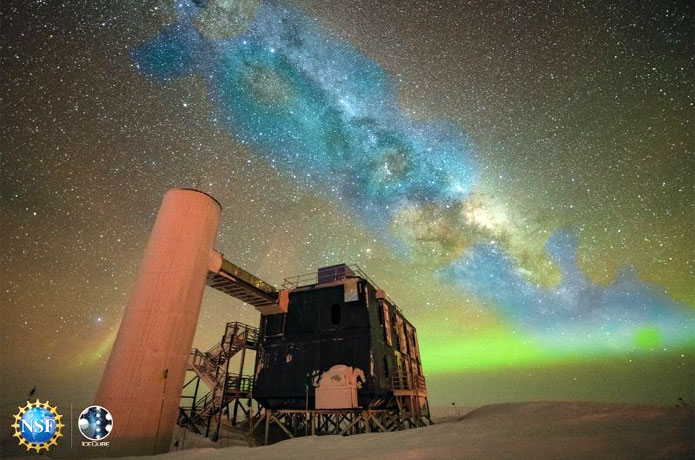Wire Maze Electricity DIY STEM Kit
$8.99$4.95
Posted on: Jul 30, 2023

From visible starlight to radio waves, the Milky Way galaxy has long been observed through the various frequencies of electromagnetic radiation it emits. Scientists have now revealed a uniquely different image of our galaxy by determining the galactic origin of thousands of neutrinos — invisible "ghost particles" which exist in great quantities but normally pass straight through Earth undetected. The neutrino-based image of the Milky Way is the first of its kind: a galactic portrait made with particles of matter rather than electromagnetic energy.
The breakthrough was achieved by a collaboration of researchers using the U.S. National Science Foundation-supported IceCube Neutrino Observatory at NSF's Amundsen–Scott South Pole Station in Antarctica. The immense observatory detects the subtle signs of high-energy neutrinos from space by using thousands of networked sensors buried deep within a cubic kilometer of clear, pristine ice. The results were revealed at an event at Drexel University and published in the journal Science.
"I remember saying, 'At this point in human history, we're the first ones to see our galaxy in anything other than light,'" says Drexel University physicist Naoko Kurahashi Neilson of the moment she and two doctoral students, Steve Sclafani with Drexel and Mirco Hünnefeld with TU Dortmund University in Germany, first examined the image. Kurahashi Neilson proposed the innovative computational analysis used to generate the image and received funding to pursue her idea through a grant from NSF's Faculty Early Career Development program.
"As is so often the case, significant breakthroughs in science are enabled by advances in technology," says Denise Caldwell, director of NSF's Physics Division. "The capabilities provided by the highly sensitive IceCube detector, coupled with new data analysis tools, have given us an entirely new view of our galaxy — one that had only been hinted at before. As these capabilities continue to be refined, we can look forward to watching this picture emerge with ever-increasing resolution, potentially revealing hidden features of our galaxy never before seen by humanity."
"What's intriguing is that, unlike the case for light of any wavelength, in neutrinos, the universe outshines the nearby sources in our own galaxy," says Francis Halzen, a physicist at the University of Wisconsin–Madison and principal investigator at IceCube.
Beyond the daunting challenge of just detecting notoriously elusive neutrinos (and distinguishing them from other sorts of interstellar particles) is the even more ambitious goal of determining where they came from. When neutrinos happen to interact with the ice beneath IceCube, those rare encounters produce faint patterns of light, which IceCube can detect. Some patterns of light are highly directional and point clearly to a particular area of the sky, allowing researchers to determine the source of the neutrinos. Such interactions were the basis for the IceCube Collaboration's 2022 discovery of neutrinos that came from another galaxy 47 million light-years away.
Other interactions are far less directional and produce cascading "fuzz balls of light" in the clear ice, says Kurahashi Neilson. Her fellow IceCube Collaboration members, Sclafani and Hünnefeld, developed a machine-learning algorithm that compared the relative position, size and energy of more than 60,000 such neutrino-generated cascades of light recorded by IceCube over 10 years.
The three researchers spent over two years meticulously testing and verifying their algorithm using artificial data simulating neutrino detections. When they eventually fed the real IceCube-provided data to the algorithm, what emerged was a picture showing bright spots corresponding to locations in the Milky Way that were suspected to emit neutrinos. Those locations were in places where observed gamma rays were thought to be the byproducts of collisions between cosmic rays and interstellar gas, which theoretically should also produce neutrinos.
"A neutrino counterpart has now been measured, thus confirming what we know about our galaxy and cosmic ray sources," says Sclafani.
Over many decades, scientists have revealed countless astronomical discoveries by expanding the methods used to observe the universe. Once-revolutionary advances such as radio astronomy and infrared astronomy have been joined by a new class of observational techniques using phenomena such as gravitational waves and now, neutrinos. Kurahashi Neilson says that the neutrino-based image of the Milky Way is yet another step in that lineage of discovery. She predicts neutrino astronomy will be honed like the methods that preceded it, until it too can reveal previously unknown aspects of the universe.
"This is why we do what we do," she says. "To see something nobody has ever seen, and to understand things we haven't understood."